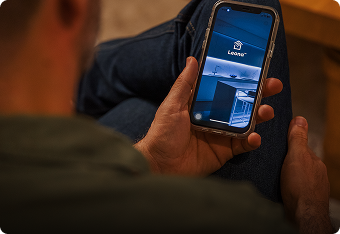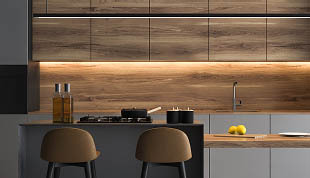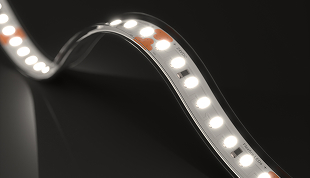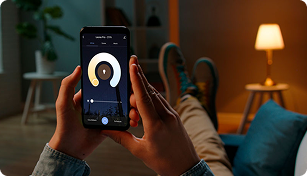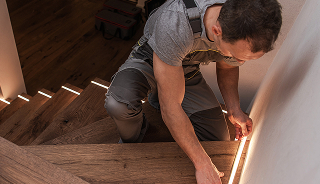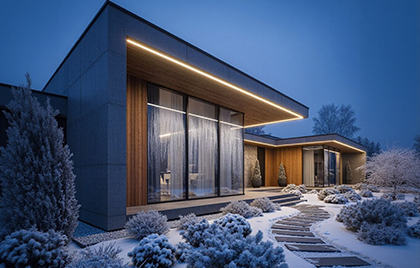Are LED Light Strips Safe and Suitable for Winter Use?
Facing winter with lights is easy when you know your LED specs. Outdoor LED strip lights can be your best ally in cold weather—discover why.
Beyond the warmth of the holiday season, many of us share a common concern: ensuring reliable outdoor lighting so we can gather with loved ones and move around safely. Especially in states where snow falls or temperatures start to drop! Can LED strip lighting rise to the challenge of winter? Can we trust it not to let us down during the coldest months of the year?
The short answer is yes. Thanks to their versatility and durability, outdoor strip lights are usually a safe and dependable choice for winter lighting, particularly those of premium quality and backed by a solid LED warranty.
That said, there are several factors to keep in mind when choosing the right option: product specifications, your local weather conditions, and your intended uses—all of which we’ll explore together in this blog.
Are There Snow LED Lights?
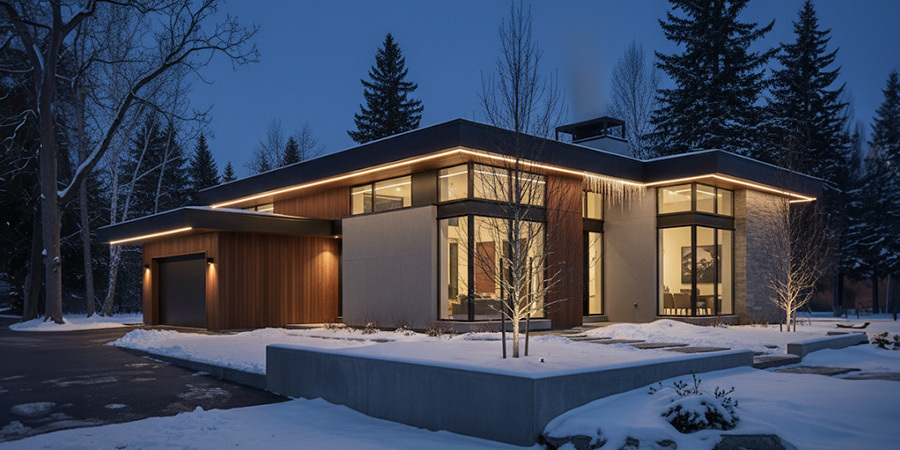
Whether you’re planning to install firepit or BBQ area lights for the holiday season, or you already have them set up from summer gatherings and now wonder how they’ll hold up through winter, the truth is this: unlike your car tires or your roof’s protective coating, you don’t need special “snow-rated” LED strip—nor are there any marketed strictly for that purpose.
While we’ll dive deeper into outdoor lighting choices, it’s worth highlighting why outdoor strip lights are generally well-suited for winter projects, effectively making them ideal snow LED lights, even without carrying that specific label:
- Instant On: Unlike traditional lighting (such as fluorescents), LEDs reach full brightness instantly—even in sub-zero temperatures.
- Energy Efficiency: LEDs consume less power and actually perform more efficiently in cold weather, since low ambient temperatures help maintain optimal operating conditions.
- Durability: High-quality outdoor LED strips are built with durable, sealed materials (like silicone) that resist cracking and damage from extreme cold and temperature fluctuations between day and night.
How Long Do LED Strip Lights Last in Cold Weather?

Outdoor LED strip lights are built for endurance. And, generally speaking, just like their indoor counterparts, they offer an expected lifespan of 25,000 to 50,000 hours of use. In the case of premium models and top-tier components from Flexfire, you can expect the higher end of that range.
When it comes to winter and colder climates, there’s actually some good news—LEDs don’t have to face one of the biggest threats to their lifespan: heat. Cooler temperatures help keep components stable and efficient, allowing your lights to last even longer.
However, that doesn’t mean they’re entirely in the clear. Moisture (for instance, from melted snow pooling into water), exposure to the elements, and, in extreme cases, very low temperatures can all affect performance and longevity if the installation isn’t properly protected or the wrong type of lights are used.
What Are LED Strip Lights’ Ideal Specs for Cold and Snow?
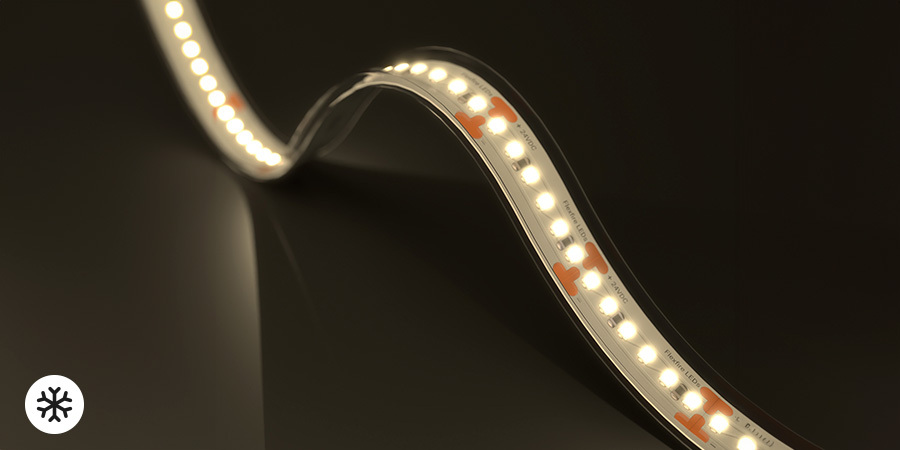
If you're building or remodeling a house in a place that gets cold winters, keep the following in mind when you make your outdoor lighting choices:
LED Operating Temperature
Choose LED strips that perform in cold conditions—ideally, like Flexfire’s, within a range of -4 °F to 113 °F (-20 °C to 45 °C) or wider. That doesn’t mean they’ll suddenly stop working outside those numbers, but you might notice an occasional flicker or slight performance dip if temperatures go beyond it for too long.
LED Light Casing Material
Look for outdoor strips encased in high-quality silicone rubber, whether potted or extruded. Unlike cheaper plastics that can crack in the cold, silicone remains flexible even in freezing weather—this prevents the casing from becoming brittle, which helps keep moisture out and your lights shining bright.
LED Strip Lighting Mounting and Installation
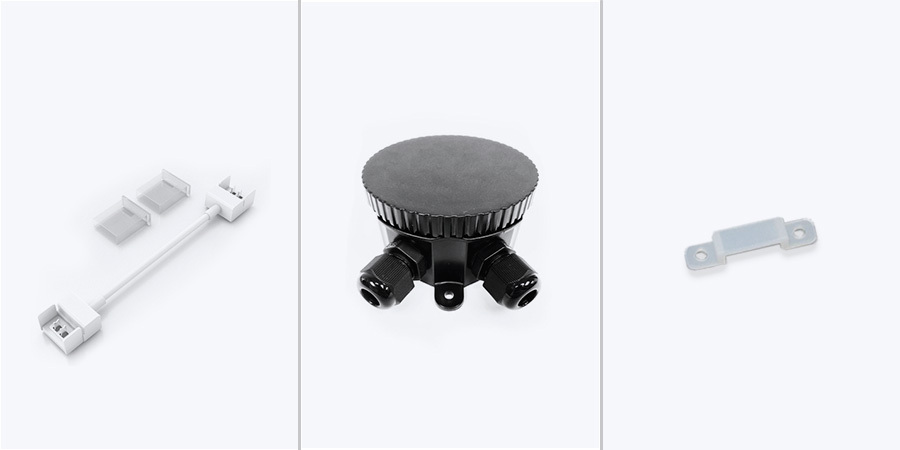
Cold weather can make regular adhesive lose its grip, so look for LED strips with strong, weather-resistant backing tape made for outdoor use. For added mounting support in unsanded wood or concrete, use silicone mounting brackets to keep the strips securely in place without damaging them.
When connecting everything, make sure your power supply, controllers, and joins are protected using wire terminal boxes, outdoor-rated connectors, and a waterproof, electronic-grade sealant. Taking these precautions helps prevent LED flicker, corrosion, and short circuits caused by melted snow or condensation.
Ingress Protection (IP Rating)
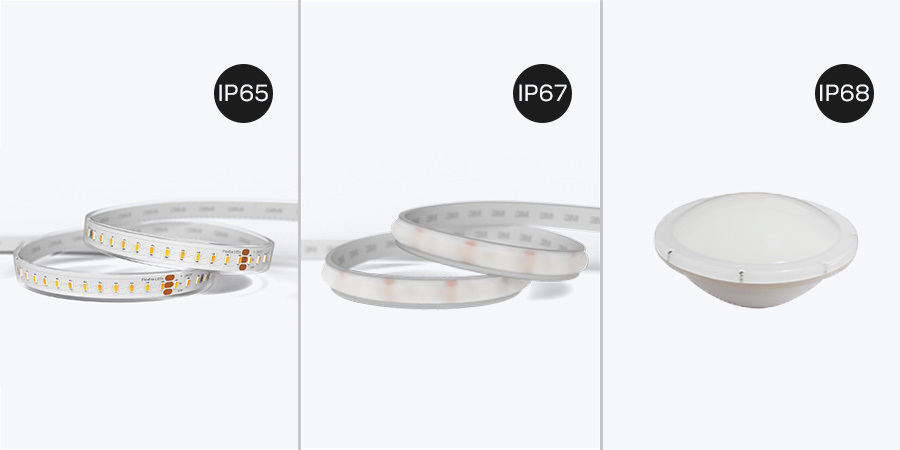
Finally, pay attention to your LED strips’ IP rating, short for Ingress Protection. This is an international standard that indicates how well a product resists dust and water.
For outdoor LED strip lights, the right IP rating depends on where and how you’ll use them. In most winter settings, you’ll want a rating of IP65, IP67, or IP68 . Let’s dig a little deeper into what those numbers really mean, and how to choose the best protection level for your cold outdoor spaces.
Is IP65 Suitable for Outdoor Use During Winter?
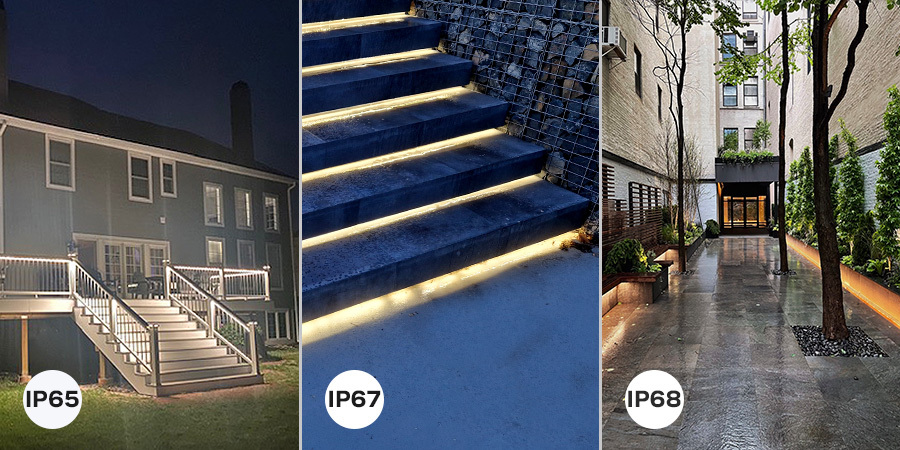
IP65-rated LED strip lights can absolutely be used outdoors in winter, as long as they’re installed in a spot that’s reasonably sheltered. An IP65 rating confirms that your lights are dustproof and resistant to low-pressure water jets, so they’ll handle occasional snow, drizzle, or moisture from melted ice just fine.
For example, if you’re installing your strips under a covered patio roof, beneath deck railings, or along a wall where snow doesn’t pile up, IP65 protection is typically enough. The silicone or coated casing will keep out most of the moisture these areas encounter.
However, for harsher or more exposed conditions, IP67 or IP68 lights are the safer choice:
- IP67 light strips are fully waterproof against short-term immersion, meaning they can withstand heavy snowfall or sitting in small puddles of melted ice for a while. They’re ideal for spots like low garden walls, stair edges, or walkways where water or snow tends to collect.
- IP68 lights take it a step further, offering protection against continuous submersion. These are best for areas that regularly flood, stay damp, or get buried in snow for days at a time, such as driveways, open decks, or landscape lighting close to the ground.
So while IP65 can handle most mild winter scenarios, going for IP67 or IP68 ensures long-term durability and peace of mind when facing the full force of winter.
Which U.S. Regions Have the Most LED-Friendly Winter Climates?
All of these specs considered, in a country as big and varied as ours, winter doesn’t mean the same thing everywhere. Some folks will still be in shorts and flip-flops in Florida come December, while others up north are busy digging their cars out of the snow!
If you and yours live in a state where winter stays within the recommended operating temperature range we mentioned earlier, there’s really nothing to worry about. Your LED strips should shine just fine all season long in these locations:
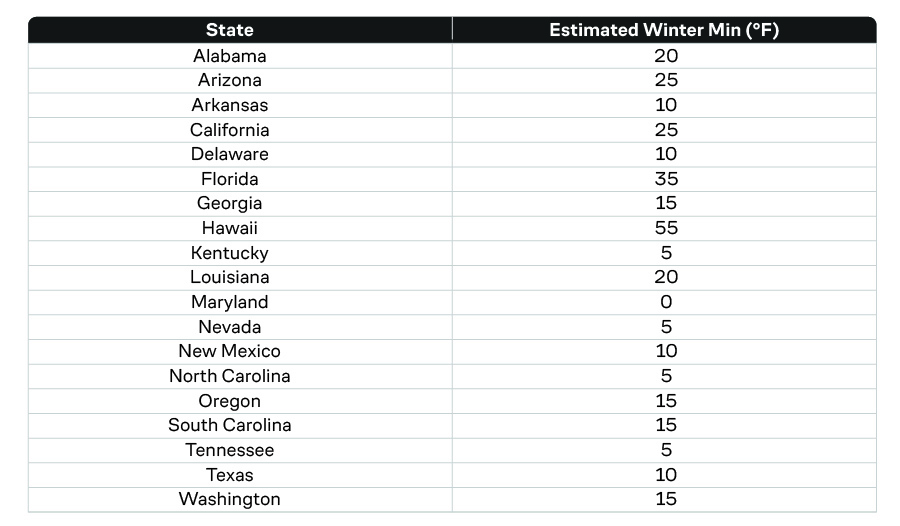
But what about Connecticut, Maine, and all the others? Don’t panic! It’s worth keeping in mind that the real challenge in cold weather isn’t usually the LED strip light itself. Most high-quality outdoor LEDs are built to handle freezing temperatures. What tends to cause problems are three simple things:
- Installation Conditions: Climbing a ladder or working on a roof in icy weather isn’t just uncomfortable—it can be dangerous.
- Materials and Wiring: Certain sealants, connectors, or cables can stiffen up or lose flexibility in extreme cold, making it harder to get a proper, weatherproof seal.
- Power Supply Winterproofing: If not properly selected, installed, and protected, power supplies can fail even more quickly than the lights themselves.
So, if you’re in a state or area where temperatures occasionally drop below that range, it’s not that your lights will suddenly stop working—your LEDs are tougher than you think. It’s the installation, sheltering, and materials that need a little extra care when temperatures drop.
Where to Put LED Strip Lights Outdoors This Winter? Flexfire Makes It Simple!
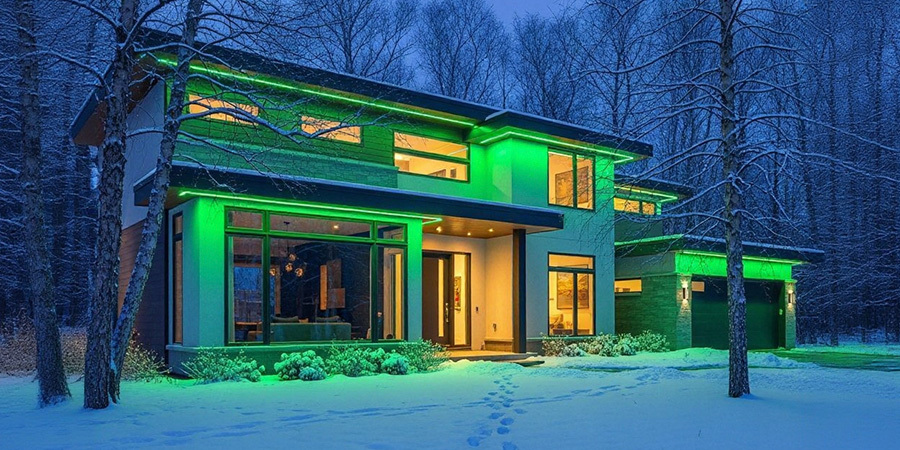
At Flexfire, we don’t just help you (and your trusted electrician—always a must for any outdoor installation!) understand the key requirements to make your exterior lighting a winter success. As a little bonus, we also want to share where and for what you can use outdoor LED lights during the colder months.
Whether you’re looking to set the perfect festive mood or add practical lighting for safety and comfort, here are the top outdoor winter applications for LED strip lights:
- Permanent Holiday Lighting: Year-round, customizable LED strips installed under eaves, railings, and rooflines are a popular, low-maintenance alternative to traditional string lights for the holiday season. They can be set to Christmas colors or patterns this time of year, then reverted to their original settings.
- Navigation Lights: Running LED strips underneath stair treads or rails, or along the edge of walkways, highlights icy or snowy steps and prevents slips and falls, while illuminating the threshold of a garage or front door eases keyhole access and enhances security during long, dark evenings or winter storms.
- Feature Lighting: Accent outdoor elements that stand out against the snow, such as stone planters, gazebos, or retaining walls.
Do you have any questions about your lights, the temperature at your location, or how to maintain your setup this coming winter? Our LED lighting experts also specialize in exterior design and architectural integration—contact us today! Their guidance is, without a doubt, a warm helping hand for the cold season ahead.




